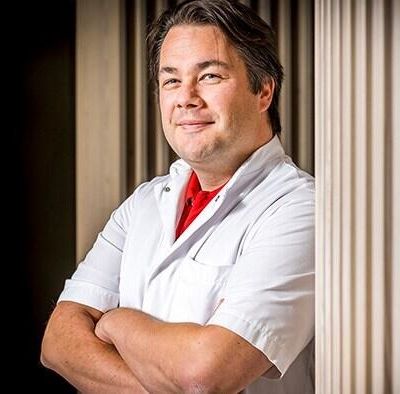
Timing is everything. Taking X-ray images at the right moment thanks to live camera
- By
- Featuring
- August 05 2024
- 2 min read
Radiologists and technologists are familiar with the challenges of X-ray imaging. The patient must be in exactly the right position, the X-ray tube and the stand must be put in the correct place after each image and the image must be taken at the right moment. The layout of one X-ray room at LangeLand Hospital’s new Reinier Haga Orthopedic Center prevented technologists from having a direct view of the patient from the control area, making it difficult to time image capture. They needed a solution that would enable them to take X-ray images at just the right moment with limited visibility.
At-a-glance:
- Technologists did extensive research and compared systems before deciding on DigitalDiagnost C90 and Mobile Diagnost systems.
- The live camera integrated into the DigitalDiagnost C90 system allowed technologists to observe on a monitor.
- Technologists appreciated being able to see and control things without having walk back and forth as much.

Prioritizing the user experience
The DigitalDiagnost C90 proved to be the solution to the imaging challenges faced by technologists at LangeLand Hospital. The system uses automatic positioning to move into the correct position before each image, and through the live camera, the technologists can watch on the screen and take the image at exactly the right moment.
The result is a highly improved user experience, as Camiel Klink, interventional radiologist and medical director of the new radiology department explains: “Our technologists no longer have to look around corners, which is making their workflow so much easier and means they don't have to walk back and forth as much.”
Klink, who was closely involved in selecting the new system, believes that this improved user experience played an important part in the hospital’s selection process, explaining: “Let's be honest. These days, you don’t really get bad X-ray images anymore. The difference between one system and the next is now mainly down to user experience."
These days, you don't really get bad X-ray images anymore. The difference between one system and the next is now mainly down to user experience.

Camiel Klink
Interventional Radiologist and Medical Director, Radiology Department
LangeLand Hospital, Zoetermeer, The Netherlands
Five years ago, when Klink joined the hospital’s radiology department, replacing the equipment was an important step in the right direction.
He explains, “Together as a new team of radiologists, each with our own specialization, we’ve been able to take significant steps in the past few years toward expanding and modernizing the department. But we still have a lot of goals we want to achieve.”
He continues, “At the start, we were already making some use of the current Bucky systems, but we were also still working with mobile systems with phosphor plates, which were beginning to show signs of wear. We knew that we needed to replace them.”
This process gained momentum when the department became aware of plans for a new orthopedic center at the hospital, with Klink explaining: “Suddenly we were talking about four rooms that each needed a solution. We needed something that we could work properly with and that would allow technologists to interact with each other easily.”

Both the hospital and the orthopedic center now have DigitalDiagnost C90 and MobileDiagnost systems, but it wasn’t a decision the department made overnight. He explains, “We can't do our job without the right equipment, so it’s extremely important that the systems we have are very good. A group of technologists did extensive research, visiting different suppliers and comparing systems. This research was put together in a comprehensive report, which we used to make our selection together with the board of directors.”
We can't do our job without the right equipment, so it’s extremely important that the systems we have are very good. A group of technologists did extensive research, visiting different suppliers and comparing systems.

Camiel Klink
Interventional Radiologist and Medical Director, Radiology Department
LangeLand Hospital, Zoetermeer, The Netherlands
Using the live camera
In the end, user experience was the deciding factor, as well as the live camera, which allows technologists to observe on a monitor and take the image at the right moment. The DigitalDiagnost C90’s automatic positioning was also a great advantage. “Technologists no longer have to twist themselves around to be able to see and control everything properly. The system is designed to let you spend more time with the patient,” adds Klink.
And thanks to the live camera integrated into the DigitalDiagnost C90 system, the room’s awkwardly positioned control area is no longer an issue for the team.
Klink concludes, “We were involved as a department in the process of designing the orthopedic center, so we were able to specify all of the modality requirements that we had. The only thing that we had no say in was the actual structure of the rooms, and so we realized that one of the rooms did not have an ideal control area. Without a camera, we would have had to make some compromises when furnishing the Bucky room, but thanks to the live camera, it’s no longer a problem at all.”
Featuring

Camiel Klink
Interventional Radiologist and Medical Director, Radiology Department
LangeLand Hospital, Zoetermeer, The Netherlands
Patient comfort leads to first-time-right imaging
Copy this URLto share this story with your professional network
Disclaimer
Results are specific to the institution where they were obtained and may not reflect the results achievable at other institutions. Results in other cases may vary.